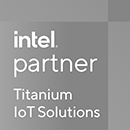NSA 7150 is a Multi-Purpose Appliance Enabling Enhanced Security
The Trend
The technologies, resources, and facilities of conventional base stations were under an oligopoly by a very few telecom giants, until the first commercial Open RAN network rolled out a few years ago. 5G continues its advances into industrial applications amid the turmoil of the pandemic, and the rise of Open RAN architecture opens up completely new potential applications for a fully connected society.
The surging demands for 5G also drive innovations in specifications as transmissions at higher bandwidths become standards and higher frequency bands come into play. On top of the changes in infrastructure and hardware renewal, 5G also enables evolutions in network management towards software defined virtualization and being cloud-based, which make high-speed, multi-session, and low-latency connections possible.

With 5G’s broad spectrum spanning from 6 GHz to 300 GHz, and higher frequencies supporting smaller cell sizes, 5G networks are able to produce vast coverage in residences, manufacturing plants, or even within buildings. The following figure shows how the network architecture migrates from 4G LTE to 5G O-RAN. Unlike a highly integrated architecture in 4G LTE, under which RAN (Radio Access Network) is made up of BBU (Baseband Unit) and RRU (Remote Radio Unit), the architecture of O-RAN is composed of a hardware layer including CU (Central Unit), DU (Distributed Unit), and RU (Radio Unit) as well as software for the control and management of transmission interfaces between different layers. Breaking the 4G BBU into RU, DU, and CU, the 5G network architecture brings much more flexibility to service providers.

Figure 1. Network architecture change from 4G to 5G RAN.
O-RAN has already become an irreversible trend with numerous benefits. It allows service providers to quickly introduce new services to market, improve operational efficiency, and diversify suppliers to put together an efficient, flexible, and fast network system.
As live streaming becomes more accessible and connected services soar, data traffic grows at an enormous rate, about 60% per year . New infrastructure also revolutionizes the way industries and organizations use the internet. The high bandwidth 5G offers greatly reduces latency to near-zero, and the much faster and more reliable connection has transformed the landscape of healthcare and medical industries. Adding the emerging IoT devices to high-speed 5G networks, telemedicine and remote monitoring systems are now realities, offering the real-time care and practices to hundreds of thousands of patients.
The Challenge
Looking back on the development of wireless communications, from 1G to 4G, telecom services were human-centric, designed to serve all kinds of human activities, such as voice, short message service (SMS), video, etc. However, the demands of a modern society for high-bandwidth, high-speed, and low-latency services has outgrown what the facilities could offer. 5G emerges as a massive shift in the way we experience connectivity, a fundamental change to how the world communicates.
To fully unleash the performance of 5G networks, the O-RAN platform is composed of a collection of interfaces that meet O-RAN standard requirements to host the relevant O-RAN functions, the supporting software components, and the appropriate management and orchestration functions.
The new architecture obviously entails diversity, which inevitably bring a challenge to hospitals and schools: a cost-effective system meeting an extremely high requirement of performance, bandwidth (as high as 1Tbps), and cybersecurity.
NEXCOM Solution
NSA 7150 features two 3rd Gen Intel® Xeon® scalable CPUs, which are new network-optimized processors and perfectly fit network edge workloads and security appliance needs. They are available in a range of cores, frequency, features and power to deliver lower latency, higher throughput and deterministic performance for customer requirement.
For the security concerns, Intel® Software Guard Extensions is integrated into CPU to enable secure channel setup and communication between the 5G control functions. Built-in crypto acceleration can reduce the performance impact of full data encryption and increase the performance of encryption-intensive workloads.
Thanks to the Intel Lewisburg C62x Series chipset, NSA 7150 natively supports Intel® QuickAssist Technology, enhancing data processing capabilities. The presence of RunBMC enables remote management to hardware and software, offering extra administrative convenience.
To illustrate the capacity and security capabilities of NSA 7150 there were 2 tests running simultaneously: SCAS (Security Assurance Specification) test and 5GC network UE capacity test. Both tests were done with ORANge - Radio Access Network next Generation Emulator by O’Prueba, the first Research and Service Company (RSC) from National Chiao Tung University (NCTU) in Taiwan, which is a spinoff from NCTU Network Benchmarking Lab. ORANge provided various testing scenarios which aimed to solve the testing issues from user’s needs. Detailed topology is shown on Figure 2.

Figure 2. Topology for SCAS and 5GC network UE capacity tests.
A single appliance of NSA 7150 with ORANge software running on it performed as UE generator and sent the signals to Amari Callbox 5G SA Core Network simulator. As the result, 12,000 UEs have been successfully registered, which is maximum boundary value for this testing equipment, but not limit for NSA 7150.
5G Security Assurance Specification (SCAS) test shown the result within the TS 33.512 5G Security Assurance Specification for Access and Mobility management Function (AMF), published by 3GPP.
Conducted tests and attained results show that NSA 7150 is able to meet international standards of 5G Security Assurance Specification for Access and Mobility management function. NSA 7150 also performs remarkably as 5G UE generator to stress core network capacity. It also tested ready to be used at either RU, DU or CU stage, or as shown in SCAS test can act as DU+CU+DU simultaneously.
Moreover, NSA 7150 is available in multiple SKUs, with various options of Intel® processors and LAN modules to best fit a wide variety of O-RAN architectures. Customizable performances and bandwidths offer the highest flexibility for a variety of use cases, making it the friendliest yet best solution for hospitals or schools to build private 5G networks.
Conclusion
NSA 7150 is a perfect high-performance NFVi appliance for service providers and enterprise professionals. It’s unique flexible design allows it to be deployed at any stage of 5G network (RU, DU, CU). NSA 7150 is built with the latest technologies to maximize the resource pool for virtual network deployment, empowering IT professionals to execute extensive application scenarios and use cases, including hospitals and university campuses, and other places with mass gathering of people and IoT devices. NSA 7150 is a single appliance to enable multiple applications and offer excellent performance without any security or throughput sacrifices.

- Related Links:
- Achieve Faster AI Insights with NEXCOM FTA 5190 and Xeon® 6 SoC
- NEXCOM Drives Edge AI, Dual 5G, and OT Security Innovation at CommunicAsia 2025
- Browse Other News:
- Urban PET Recycling Reinvented Sustainable Solutions Powered by NDiS B561
- AIEdge-X®80 Leaps Ahead: Power Up TOPS Performance with NVIDIA® Jetson™ Super Mode
- All White Papers News

